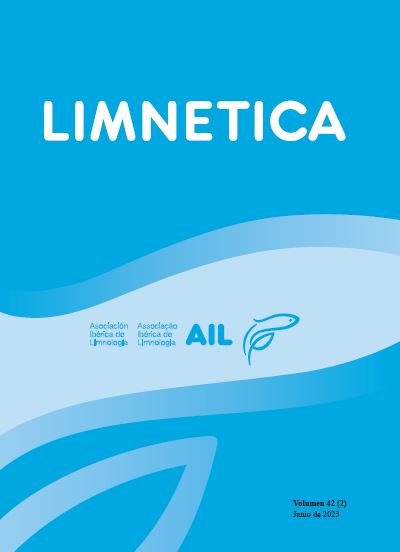Bioaccumulation of metals and genotoxic effects in females of Colomesus asellus collected in an Amazon River estuary, Amapá, Brazil
Resum
Colomesus asellus (Amazonian Puffer) is endemic to the Amazon basin. It uses channels and streams to reproduce, spawn and feed. In areas close to urban centers, these fish may be exposed to anthropogenic residues containing mixtures of metals that can be bioaccumulated, resulting in genetic alterations. Therefore, we aimed to determine the extent of nuclear alterations in erythrocytes of female C. asellus resulting from the bioaccumulation of metals in tissues and organs. The metal concentrations were analyzed by atomic absorption spectrophotometry. Tissue metal concentrations decreased in this order: Fe > Zn > Cu > Mn > Hg > Pb > Ni > Cd > Cr. In fish tissues/organs, the concentration of metals followed, in decreasing order, liver > skin > gonads > musculature > bones. The most frequent nuclear alterations were nuclear invagination, nuclear budding and lobulated nucleus. Metal concentrations and nuclear alterations observed can damage the C. asellus, compromising the conservation of this species at the mouth of the Amazon River.
Descàrregues
Publicades
Número
Secció
Llicència
Los autores que publican en esta revista están de acuerdo con los siguientes términos:
- Limnetica está bajo una licencia de Creative Commons Atribución-NoComercial 4.0 Internacional.
b. Los autores pueden establecer por separado acuerdos adicionales para la distribución no exclusiva de la versión de la obra publicada en la revista (por ejemplo, situarlo en un repositorio institucional o publicarlo en un libro), con un reconocimiento de su publicación inicial en esta revista.
c. Se permite y se anima a los autores a difundir sus trabajos electrónicamente (por ejemplo, en repositorios institucionales o en su propio sitio web) antes y durante el proceso de envío, ya que puede dar lugar a intercambios productivos, así como a una citación más temprana y mayor de los trabajos publicados (Véase The Effect of Open Access) (en inglés).


